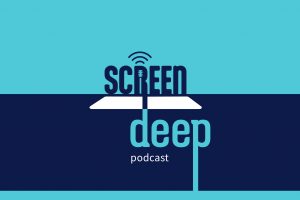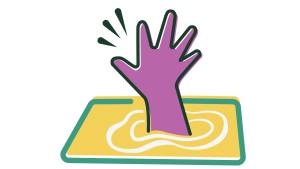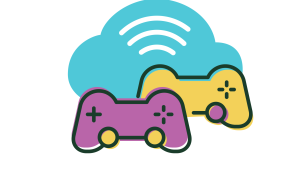Concern about youth digital addiction is a relatively recent but significant addition to the list of common worries for parents of adolescents.. What exactly is digital addiction, and how does it relate to other forms of addiction such as gambling and substance-use disorders? On this episode of Screen Deep, host Kris Perry sits down with Marc Potenza, MD, PhD, to discuss his pioneering research on Internet and behavioral addiction. Marc discusses the brain science behind adolescent vulnerability to digital addiction and its similarities to other addictions, and differences between individuals that might explain why some teens are more prone to problematic use of digital media. He also describes his work with colleagues on determining the diagnostic criteria for behavioral addictions, gambling in video games, and resources for parents.
Listen on Platforms
About Marc Potenza
Dr. Potenza is the Stephen M. Southwick Professor of Psychiatry, Professor in the Child Study Center and Neuroscience at the Yale School of Medicine, and he directs the Division on Addictions Research, Center of Excellence in Gambling Research, Women and Addictive Disorders Core, Health Research at Yale and Yale Research Program on Impulsivity and Impulse Control Disorders.
He is a board-certified psychiatrist with sub-specialty training in addiction psychiatry. Dr. Potenza’s research focuses on the neurobiology and treatment of addictions and other disorders, including gambling disorder, that are characterized by impaired impulse control and reward-related motivations.
Dr. Potenza has published over 800 papers and chapters and is ranked first globally by the independent firm Expertscape in multiple clinical research categories including gambling, addictive, impulsive and compulsive behaviors. He has received multiple national and international awards for excellence in research and clinical care. He has consulted to the Substance Abuse and Mental Health Services Administration, National Registry of Effective Programs, National Institutes of Health, American Psychiatric Association and World Health Organization.
In this episode, you’ll learn:
- How Dr. Potenza and other researchers first identified gaming and other internet use disorders.
- What brain imaging can tell us about the specific brain patterns associated with behavioral addictions in adolescents.
- How natural changes in the adolescent brain make teens more vulnerable to digital and behavioral addictions.
- What factors contribute to the development of addictive disorders in young people.
- Why some youth are more resilient to risk factors for addiction than others.
- About groundbreaking new research showing similarities in brain patterns between adults who started drinking heavily early in life and 9-10 year-olds with heavy internet use and behavioral issues.
Research papers, in order mentioned
Desai, R. A., Krishnan-Sarin, S., Cavallo, D., & Potenza, M. N. (2010). Video-gaming among high school students: health correlates, gender differences, and problematic gaming. Pediatrics, 126(6), e1414-e1424.
Liu, T. C., Desai, R. A., Krishnan-Sarin, S., Cavallo, D. A., & Potenza, M. N. (2011). Problematic Internet use and health in adolescents: data from a high school survey in Connecticut. The Journal of Clinical Psychiatry, 72(6), 15663.
Chambers, R. A., Taylor, J. R., & Potenza, M. N. (2003). Developmental neurocircuitry of motivation in adolescence: a critical period of addiction vulnerability. American Journal of Psychiatry, 160(6), 1041-1052.
Garrison, K. A., Yip, S. W., Balodis, I. M., Carroll, K. M., Potenza, M. N., & Krishnan-Sarin, S. (2017). Reward-related frontostriatal activity and smoking behavior among adolescents in treatment for smoking cessation. Drug and Alcohol Dependence, 177, 268-276.
Hommer, D. W., Bjork, J. M., & Gilman, J. M. (2011). Imaging brain response to reward in addictive disorders. Annals of the New York Academy of Sciences, 1216(1), 50-61.
Luijten, M., Schellekens, A. F., Kühn, S., Machielse, M. W., & Sescousse, G. (2017). Disruption of reward processing in addiction: an image-based meta-analysis of functional magnetic resonance imaging studies. JAMA Psychiatry, 74(4), 387-398.
Zhao, Y., Paulus, M., Bagot, K. S., Constable, R. T., Yaggi, H. K., Redeker, N. S., & Potenza, M. N. (2022). Brain structural covariation linked to screen media activity and externalizing behaviors in children. Journal of Behavioral Addictions, 11(2), 417-426.
Dell’Osso, B., Di Bernardo, I., Chamberlain, S., Fineberg, N., Fineberg, N. A., Demetrovics, Z., … & Billieux, J. (2021). Learning to deal with Problematic Usage of the Internet/Revised Edition. https://www.internetandme.eu/wp-content/uploads/2023/05/PUICompanionBook-ENG-2a-ed-13-versione-A-crnwxw.pdf
Zhao, Y., Paulus, M. P., Tapert, S. F., Bagot, K. S., Constable, R. T., Yaggi, H. K., … & Potenza, M. N. (2024). Screen time, sleep, brain structural neurobiology, and sequential associations with child and adolescent psychopathology: Insights from the ABCD study. Journal of Behavioral Addictions, 13(2), 542-553.
[Kris Perry] Hello and welcome to the Screen Deep podcast where we go on deep dives with experts in the field to decode young brains and behavior in a digital world. I’m Kris Perry, Executive Director of Children and Screens and host of Screen Deep. Today I’m joined by Dr. Marc Potenza, a world renowned expert in addiction science and medicine, from gambling and substance abuse disorders to problematic internet use and gaming disorders. Marc is currently Professor of Psychiatry, Child Study and Neuroscience at Yale University School of Medicine, where he also directs a number of research divisions and centers on addiction, gambling and impulsivity. He serves on the editorial boards of 15 journals and is a valued member of Children’s Screens’ National Scientific Advisory Board. Marc has pioneered the use of brain imaging to better understand addictive disorders and their treatments and has won multiple awards for excellence in research and clinical care. There’s so much we can learn from Marc today. So let’s dive in. Welcome, Marc.
[Dr. Marc Potenza] Thank you, Kris. Thank you for having me and covering this important topic.
[Kris Perry] Marc, your credentials are so wide ranging across medicine and neuroscience. How would you categorize your professional and academic focus in a nutshell, and is there a thread that ties it all together? What led you to want to study these topics and get to be such an expert around digital addiction and its connection to addiction science?
[Dr. Marc Potenza]: Something that many people may not appreciate is there are impacts of addictive behaviors and disorders at many different levels. So, if one looks at cost to society where one looks at the personal, familial, occupational, lost life, lost number of years, addictive disorders are arguably the most impactful disorders to society. And back at that time when I was in residency, when I was thinking, “what is it that I want to do?” I was thinking, where can I help people where other people are perhaps not paying as much attention and that there is a significant impact. While I had been doing basic research, preclinical research into addictions, I became exposed to impulsive and compulsive disorders during my clinical research and thought I would study people with gambling problems. And so this was my first entry into studying what are now termed addictive disorders or behavioral addictions disorders due to addictive behaviors. And this was going back now more than a quarter of a century where the internet was just being developed and it hadn’t evolved into what it is today. This clinical aspect where I did my clinical training and saw in clinic people with obsessive compulsive disorder, people with Trichotillomania, people with other impulse control disorders, I thought well, when I saw people with gambling problems, it struck me that this was more like an addiction than people with obsessive compulsive disorder. And one of the competing theories at the time was whether gambling disorder, which was classified as an impulse control disorder, was an addiction without the drug, was it an obsessive compulsive spectrum disorder? So my clinical impression was that this was more in the addiction realm, and that in part led me to pursue additional clinical training in addiction psychiatry and to try to look at the similarities and differences between people with gambling disorder and people with substance use disorder. And this then also led to involvement in efforts like the DSM-5 that ultimately reclassified gambling disorder as a non-substance addictive disorder rather than an impulse control disorder or an obsessive compulsive spectrum disorder. Now, as we were trying to gather information on gambling, we realized that the internet was growing and developing. So back in 2005–2006, we conducted a high school survey in Connecticut of 4,000–5,000 students. And while it was initially conceived of as a survey on high school gambling behaviors, we included not only substance use measures, because these were linked and we thought they were linked in many complex ways, but we also included measures of video gaming and problematic video gaming, internet use and problematic internet use, so that we could begin to explore the characteristics of groups who were having trouble with different behaviors that were being performed on the internet. And this was back in 2005 to 2006. Since that time, things have changed dramatically with respect to how youth are engaging with screen media. But this presents a historical glimpse at some of the relationships that we’ve been interested in understanding over time as behaviors have changed.
[Kris Perry] You’ve been talking a lot about the classification, categorization of different behaviors and those behaviors, it can’t – becoming problematic or in some ways viewed as disordered. You mentioned screens and children’s relationship to screens, but the precursor to you learning about that was all the other work you’d done in clinic or as a researcher to better understand human behavior and how we relate to either substances or behaviors to when those become problematic. So I’d love to hear you talk more about that categorization classification step.
[Dr. Marc Potenza] So, a lot of our work going back now 20, 25 years was to try to understand the biology, which there were emerging technologies like functional magnetic resonance imaging, that allowed us insight into the living human brain so that we could begin to explore some of the mechanisms that were linked to gambling problems, that were linked to substance use problems that we could compare and contrast. We tried to synthesize the information, one to look at whether gambling disorder and substance use disorders showed similarities or differences, but also whether gambling disorder and obsessive compulsive spectrum – obsessive compulsive disorder – showed similarities or differences, so to try to understand where this should be classified. So ultimately, the data suggested that gambling disorder be classified together with substance use disorders, which is what the American Psychiatric Association did. However, also during that time, there was the growth and development of the internet, so gaming behaviors were becoming more prevalent and people had been hearing reports of, particularly in internet cafes in Asia where people were not attending to their bodily needs and dying while gaming, parents were leaving their children unattended in cars and some of them passed while they were gaming in excessive marathon gaming sessions. I’m grateful to be involved in these meetings where we discussed the extent to which internet use could be the basis of concern or a disorder and how , if this could be the case, then how should we define these conditions. And this led, in part, led to gaming disorder being developed and proposed as a formal condition for the ICD-11 and then ultimately being adopted by the World Health Assembly in 2019, but not without controversy. And other forms of internet use behaviors that can be problematic and that have changed over time, particularly recently, so things like social media use, these are areas that I anticipate will continue to be understood better and hopefully be considered by groups like the American Psychiatric Association and the World Health Organization as the potential basis for formal clinical disorders.
[Kris Perry] I am truly in awe of the impact that you had by moving these behaviors into the classification manuals that clinicians rely on to better understand human behavior and treat it. It’s really profound and it’s an enormous contribution to the field, one that I really hope our listeners can understand, to be able to talk about behavioral addiction in this way was truly historic and incredibly important. In fact, in one of your early papers in 2003, which has been cited over 2000 times by other researchers is about addiction vulnerability in adolescents and developmental neurocircuitry. Can you tell us a little bit more about this and why it was such an important piece of scholarship and why we know, well we already know adolescence is a very vulnerable time and how that interacted with your research.
[Dr. Marc Potenza] Yes. So, I should point out that I feel like I’m part of a group of people who’ve been contributing to these efforts. So, it’s not like I’m a person who is solely responsible for these things, but I’m grateful to have had the opportunity to be involved and contribute in the ways that I could to these efforts because I agree with you that I think they’re really important efforts and they’ve taken a large number of really talented people working together to make these changes. And with respect to that paper, Andy Chambers and I were talking, he’s the first author on this paper that you mentioned, we were talking about gambling disorder and how gambling disorder and substance use disorder had this period of time where youth seem to be particularly vulnerable to initiating engagement in the behavior and then developing problems with the behavior. And so thinking about the brain being the basis for engaging in addictive behaviors, thought that neurodevelopmentally there’s, you know, if we look at the epidemiology of this peak in adolescence and early adulthood, there is likely something going on at a brain level within adolescence that is leading to this vulnerability. And during adolescence, there are multiple changes, hormonal changes that impact brain structure and function, there is substantial cortical pruning that occurs within the frontal cortex, so the ways in which neurons are strengthening or weakening connections is very active at this period of life. And from a developmental perspective, this is a period of time when youth are going from childhood to adulthood, and they’re testing different things and exploring, and so there are many things that would make sense as this being a vulnerability period. So we asked the question, well what’s happening in the brain during adolescence that may make youth vulnerable? And we thought that there were specific domains that related to motivational drive, that related to how people control their motivational drives, different brain regions and systems with the amygdala and other related brain regions providing affective information, the hippocampus, contextual memory information — what happened in similar situations or is this a new situation. And then regions like the hypothalamus and septum being involved in these biological drives like thirst and hunger and other sexual behaviors, thinking that there are probably changes in all of these brain regions and the cortical brain regions that exert control over how all of this information, perhaps from more primitive subcortical brain regions, are driving that could then lead youth to be vulnerable to engaging in potentially addictive behaviors. So that was essentially the model that we proposed that has been, we think, provided a framework and I don’t think that others had provided such a neurobiological framework previously, which is I think why people have cited this with respect to a developmental neurobiological framework for engagement in addictive behaviors.
[Kris Perry] So were you able to determine through your research how the brains of behaviorally-addicted adolescents were different from the brains of adolescents who weren’t addicted? Just in a nutshell, was that something you were able to determine?
[Dr. Marc Potenza] Not from that study, we’ve done different studies over time that have focused on adolescents or adults. So for example, in conjunction with Suchitra Krishnan-Sarin and her group, and she has a focus on adolescent smoking and vaping behaviors, we integrated brain imaging measures into one of the clinical trials that she was conducting so that we could look at how youth who were trying to quit smoking would show changes in brain activity after treatment as compared to before treatment. And one of the tasks that we used in that study was the monetary incentive delay task. The way that the task works is that people are given a cue and they either…they try to then push a button while the target’s on screen to either win money or avoid losing money and then they’re notified of the outcome. So, and they do multiple trials and the task is configured so that they’ll win maybe two-thirds of the time but either lose or are not successful at the outcome one-third of the time so that we can then look at the different trials and the brain activity associated with the different events. So we parse this out and what we found was that during this anticipatory phase of reward processing, individuals–what Daniel Hummer and colleagues had found was that individuals with alcohol use disorder showed this blunted activation of the striatum brain region that’s been implicated in reward processing, as compared to individuals without alcohol use disorder. We found something similar in people with gambling disorder, we also found something similar in people with binge eating disorder. And a meta-analysis that Marcia Lutchen and colleagues did found that across substance use and gambling disorders, there was this shared blunted activation of the striatum, including in adolescents who smoke tobacco. And what we found in this treatment study was that following treatment as compared to before treatment, there was an increase in activation during the anticipatory reward processing period in the youth with…who received treatment for smoking cessation. So it suggests that, and this is consistent with a reward deficiency model of addictions whereby natural rewards or in this case the learned reward of money does not elicit the same rewarding response in people with addictions and also people who are more vulnerable to addictions, as compared to the individuals without addictions. It also suggests that there’s malleability in the response, that you can change people’s responses to non-addictive rewards and have them be more rewarding, so it provides hope and insight into possible mechanisms for recovery from addictive disorders and engagement in addictive behaviors.
[Kris Perry] So the paper you’re talking about right now is similar to another paper you published in 2023 that likens the structural changes to brain regions from media use to the risk of addiction from early alcohol exposure. And it seems like very big news and something that I really want to pause and talk about for a second.
[Dr. Marc Potenza] Yihang Zhao is the first author of this study and is the person who really led this study. What she proposed doing was to take brain regions that had been implicated in a mouse model of alcohol binge drinking and then use that as the basis to look at structural covariation patterns in human beings using different publicly accessible data sets. We looked at the individuals who began drinking before the age of 18, before the legal adulthood period. And we looked at those who had this early drinking pattern versus those who did not.
And what we found was that there was this joint – and by using joint and independent variance explained –we found a structural covariation pattern. So this was different specific brain regions, their volumes or their thickness or thinness related to one another in a coordinated way. And this coordinated pattern linked to or differentiated the individuals who began drinking early versus those who began drinking later. And that finding was replicated in both of the two samples that I mentioned. And then we were interested in the extent to which this extended to youth, developing youth, and how it might relate to risk behaviors that youth were, in which they were engaging at that age. So we…looked at the Adolescent Brain Cognitive Development data set. And this is a study of over 11,000 youth that are followed longitudinally. Year by year, there are assessments, and every two years, there are brain imaging measures. And in the 9 to 10 year old children, we found that this brain structural co-variation pattern that we found in adult was virtually identical to what we found in the children. And we furthermore found that it was linked to…high frequency screen media activity in the nine to ten year old children as well as to externalizing behaviors – and externalizing behaviors are problems with conduct and perhaps engaging in oppositional behaviors. So it suggested to us that this factor that in adults was linked to early onset of drinking was also evident in nine to 10-year-old children and linked to high-frequency screen media activity, as well as to problems with conduct or oppositional behaviors.
[Kris Perry] You’ve covered some amazing details from these studies that you’ve been a part of, which of course include the neurocircuitry of the brain and various addictions. But to bring it back to the level a lay person might understand, do you, and your colleagues, and your work on addiction vulnerability, believe that there really is no such thing as an addictive personality based on neurobiological markers or is that just, is the term just too reductive? Is there a different way of thinking about addictive or addiction rather than referring to people as having an addictive personality?
[Dr. Marc Potenza] Yeah, I think that anyone can develop addictive disorders. And we should be mindful that it’s not just one group of people. There may be different risk factors that people have. There are genetic contributions. There are environmental contributions. Early life trauma has been linked to engagement in a variety of addictive behaviors, for example. And there are ways in which genes and environment interact with one another that are – can be complex. One can think of this, perhaps, from a Darwinian evolutionary perspective that it’s good for the whole of the population to have individual differences where some people are more sensitive to environments and other people are less sensitive. Some people have termed this dandelions versus orchids, where orchids if given the right environment can bloom and blossom into something really wonderful but they’re very sensitive to the environment and if they’re placed in a more stringent environment or more stressful or traumatic environment they may shrivel and not do well. But dandelions, you can place them just about anywhere and they’ll bloom and blossom and you know sometimes more so than people want them to bloom and blossom. It is from an evolutionary perspective, one would think that it would be good to have both. And there are going to be some people who are particularly sensitive to trauma and other people who may be more resilient. And to be able to understand these individual differences is really important if we’re thinking about how do we protect the public health, how do we protect developing youth so that they don’t veer off course during their developmental trajectories and that they do then instead blossom as well as they’re going to blossom.
[Kris Perry] Thank you for that analogy with the orchid-dandelion analogy. I think that’s a really positive way of framing such a complex set of systems in the brain and how unique each child is and each brain is and what our vulnerabilities and strengths are, so helpful. In that practical approach that you just laid out – taking something as complicated as Darwin’s theory of evolution and looking at it through a positive frame, with your clinical experience, what can you tell parents about what to look out for in terms of signs of actual digital addiction versus what might just be heavy use? And have your findings on the impacts on children helped you to think about families more and those systems and how they can be somewhat inoculative or or unintentionally contributing to their child’s heavy or intensive media use.
[Dr. Marc Potenza] Yes, I think these are really important points and oftentimes parents, it seems, feel less well equipped to address screen media activity than they may with other potential concerns. I think most people want to reap the benefits of digital technologies and minimize the harms associated with digital technologies. And how do we do this for youth who are developing in a space that is rapidly changing, where we don’t understand all of the impacts, the potential impacts that different types and patterns of screen media activity may have on their development, is complicated and challenging for children, for parents, for policy makers, for many individuals. So we have been working – and by we, this is a group through a COST initiative, which is a Cooperation in Science and Technology Initiative, that focuses–that has focused on problematic use of the internet. And we developed an “e-booklet” that is available for people to freely download that describes information on different types and patterns of problematic use of the internet, ranging from problematic pornography use to problematic gaming, problematic gambling, cyberbullying, cyberchondria, which is excessively searching for health-related information that, you know, we saw a rise in this during the pandemic where people were concerned about their health, but that can also be distressing to individuals who may be worried about their health situation. Anyway, this booklet has a number of practical tips for parents that include how to model behaviors for developing youth, to consider age-related introduction of digital technologies and digitally-transmitted information, tips about how to prevent sleep problems so not having digital devices in the bedroom at night, no digital devices an hour before bedtime, things like that, how to have tech-free zones, and to put away digital devices at meal times and have times when you connect and focus on the in-person connections rather than to be distracted by the screen where people may feel like you are phubbing or phone-snubbing another individual because you’re paying more attention to your phone than to other individuals with whom you’re in close physical proximity and supposedly engaging in social interactions. So these and other tips are available. The e-booklet which can be found at “www.internetandme, one word, .eu”. It’s also on the website for the International College of Obsessive Compulsive Spectrum Disorders. It can be downloaded for free and hopefully it’s one resource of multiple ones that can be available for individuals.
[Kris Perry] At the Institute, we hear from parents often about concerns they have about excessive video game use in particular and part of that is, we think, tied to the advent of loot boxes and other things to incentivize purchases and play in modern video gaming and how that has made video gaming more addictive. Do you see that as a particular problem? Do you see it as being more prevalent than other behaviors in adolescents?
[Dr. Marc Potenza] I think that the intersection between gambling and gaming is really important, from multiple perspectives. So you mentioned loot boxes or loot crates, which are random elements within video games that have prizes. And oftentimes the prizes are low-level value, but they can be high-level value. And these can be skins that adorn weaponry, and video games that carry not only significant value within the virtual environment, but also in “real life” where people are willing to pay considerable amounts of money for the skins. Loot boxes, loot crates are one element and they’ve been considered gambling in certain jurisdictions and it’s been debated in others. So for example, Belgium I think has outlawed loot boxes and loot crates, but in the United States, it still remains debated. There are other aspects like social casino games, which are not legally gambling, they are more games, but they also involve social network sites, so it’s an intersection of multiple forms. They may contain also microtransactions, so the ability to play for free, but then the option to pay for extended time once your free time runs out or to go to another level. Engagement in microtransactions has been linked to gambling behaviors, including within youth, suggesting that they may transition from one to another.
[Kris Perry] Backing up and looking over all the research in this field over your time as a researcher and a clinician, what’s the single most surprising finding relating to children in digital media you’ve encountered, so far in your career?
[Dr. Marc Potenza] Yeah, I’m not sure what is the most surprising. I think that there are many things that we should keep in mind – that youth can be very resilient, and while it can be very scary for parents to try to help their children navigate a complex digital environment, we should be hopeful that children will develop into healthy functioning young adults. It can be a very stressful period of time, and it’s a rapidly changing space that we do need to be trying to protect youth as much as possible. gather as much information, but also then use that information to improve prevention approaches at multiple levels, going from regulation down to one-to-one interactions between parents and children or between teachers and children and how do we protect the spaces best for youth to develop, is changing. It is with optimism that I see things like the US Surgeon General recognizing links between social media use and youth mental health concerns and citing this as an area of importance. He also recently had an op-ed piece that suggested that the use of product-warning labels on social media sites should be used in a way, like they have been used for tobacco products and alcohol products.
It’s been surprising in some ways at how rapidly the internet has been developing and changing the ways in which we do, many of the things that we do. And it doesn’t seem to be slowing down with our artificial intelligence and changes in that space occurring. So it’s important for us to do the best that we can with the information that we have, continue to gather more information, and continue to refine our approaches at multiple levels, so that we can help children develop optimally.
[Kris Perry] One of the most impressive parts of this discussion has been your personal and your colleagues’ contributions to these changes that you just underlined: the Surgeon General of the United States speaking out, the United States Congress taking a hard look at what to do to protect children, clinicians around the world understanding better how to categorize and treat behaviors that parents are concerned about in their children. This is not an accident. It’s the result of a career, multiple careers of researchers trying to uncover how the brain works, who is vulnerable and what the outcome of their exposure to certain substances or products might negatively impact them. What do you think we still need to research? What is the next most important paper for someone to write that would help us better understand how to treat children and problematic internet use?
[Dr. Marc Potenza] I’m looking forward to, in the near future, to understanding some of these relationships better longitudinally. Many of the studies that have been conducted are cross-sectional in nature. But studies like the Adolescent Brain Cognitive Development Study is longitudinal and includes measures of screen media activity, of problematic video gaming, problematic use of social media, problematic use of smartphones, so we should over time get a better understanding there’s a deeper battery of many other domains within ABCD so that we can look at these in relationship to other variables over time, get a better understanding of what leads to what. So for example, in a recent article, we looked at relationships between screen media activity, sleep and internalizing and externalizing concerns over a three year period in developing youth to look at which may lead to which. And also included some of the brain imaging measures to look at the extent to which some of the structural brain covariation pattern, how that related to some of the mental health concerns, the sleep concerns, and the screen media activity. There’s a lot for us to do even just with ABCD, but hopefully if we’re thinking about providing different stakeholders with the information and the tools that they need to help youth develop optimally, that is where the biggest impact lies.
[Kris Perry] Thank you for touching on so many of these other topics, which we also discuss in other episodes of this podcast with Dr. Christakis, Dr. Hale, Dr. Telzer, who have all worked in different aspects of child development. As we wrap up, I’m curious to know, how has your work changed the way you view your own screen time use?
[Dr. Marc Potenza] Yeah, I think I need to be mindful of the types and patterns of screen media activity that I consume, like I need to with, like I think everyone needs to do. And then also how and in which context the screens are being used. So I mentioned phubbing before. It is something where you may feel tempted to go into your pocket and get your smartphone, but being mindful of being in the present moment with another person, it’s important to understand the impact from the other person’s perspective as well and to use phones for the benefit, use computers for benefit, TV screens for benefit, without it interfering in social relationships and work and in other areas of life functioning.
[Kris Perry] Thank you, Marc, for sharing so much insight on the neuroscience of addiction and digital addiction, in particular with us today. So many parents out there are concerned about their kids’ internet use and not sure how to determine whether their child is just a heavy user or a problematic user. And your research has truly helped advance the field and continue to develop our understanding of behavioral addictions. And thank you to our listeners who made it this far with us today. For more information about Marc or a transcript of this episode, head over to our website at “childrenandScreens.org”, where you can also find a wealth of other resources about parenting, child development, and healthy digital use. Until next time, keep exploring and learning with us.







